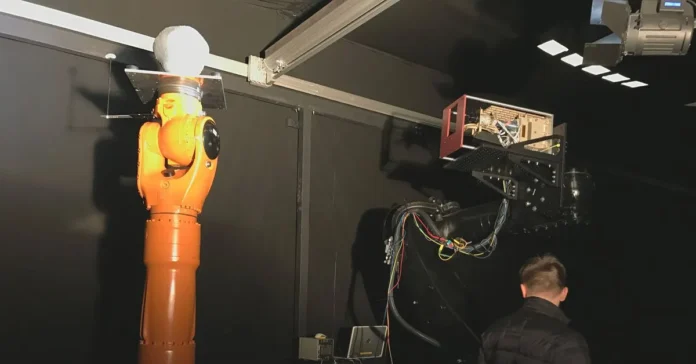The European Space Agency (ESA) is running some of the final tests required to launch its Hera mission this October, which aims to investigate the asteroid that NASA intentionally slammed a spacecraft into back in 2022. The goal is to gather more accurate information about the collision to help develop systems that can protect our planet by deflecting asteroids that head our way.
The spacecraft for the Hera mission is undergoing preflight testing, alongside the Guidance Navigation and Control (GNC) system it needs to maneuver around the Dimorphos and Didymos binary asteroid system. The GNC system is being validated via virtual tests conducted in Spain and Germany using replicas of Hera spacecraft components.
“The system for Hera’s interplanetary cruise phase — which of course is the most critical to be ready for launch — is now fully tested using the actual spacecraft flight model,” said ESA GNC engineer Jesus Gil Fernandez in the announcement blog. “This phase will end at asteroid arrival when camera images will be used to distinguish the asteroid from background stars by spotting its gradual motion across successive images.”Here’s a timeline of the Hera mission following its launch this October.Image: ESA – Science Office
The main objective of the autonomous Hera mission is to assess what actually happened to Dimorphos, the smaller asteroid that NASA’s Double Asteroid Redirection Test (DART) mission impacted, to help guide planetary defense systems. Even for a space mission, the nature of the paired asteroid system — which has a combined gravity field tens of thousands of times weaker than Earth — makes it a difficult destination to navigate. The collision with NASA’s DART spacecraft has also shifted the orbit around Didymos and likely made some major changes to its overall shape.
The ESA is currently focused on the GNC for the follow-on proximity operations phase of Hera’s mission, according to Gil Fernandez, which is needed to bring the spacecraft as close as one kilometer (0.6 miles) to the two asteroids.
Like the technology behind autonomous cars, Hera’s GNC system will use a variety of different data sources to operate safely around Didymos. “Its main data source will be its main Asteroid Framing Camera, whose images are being used both for science and navigation,” said Gil Fernandez. “These images will be combined with other inputs to make a robust estimate of its position.”
You can read all the specific technical details about how the ESA is planning for Hera to overcome these navigational issues, including surface feature tracking and repeat velocity changes, in the agency’s blog post.
Provided the Hera mission is launched successfully this October, the spacecraft is expected to spend two years journeying through space — making a flyby past Mars to gain speed and observe its moon Deimos — before reaching the Didymos binary asteroid system in October 2026.



